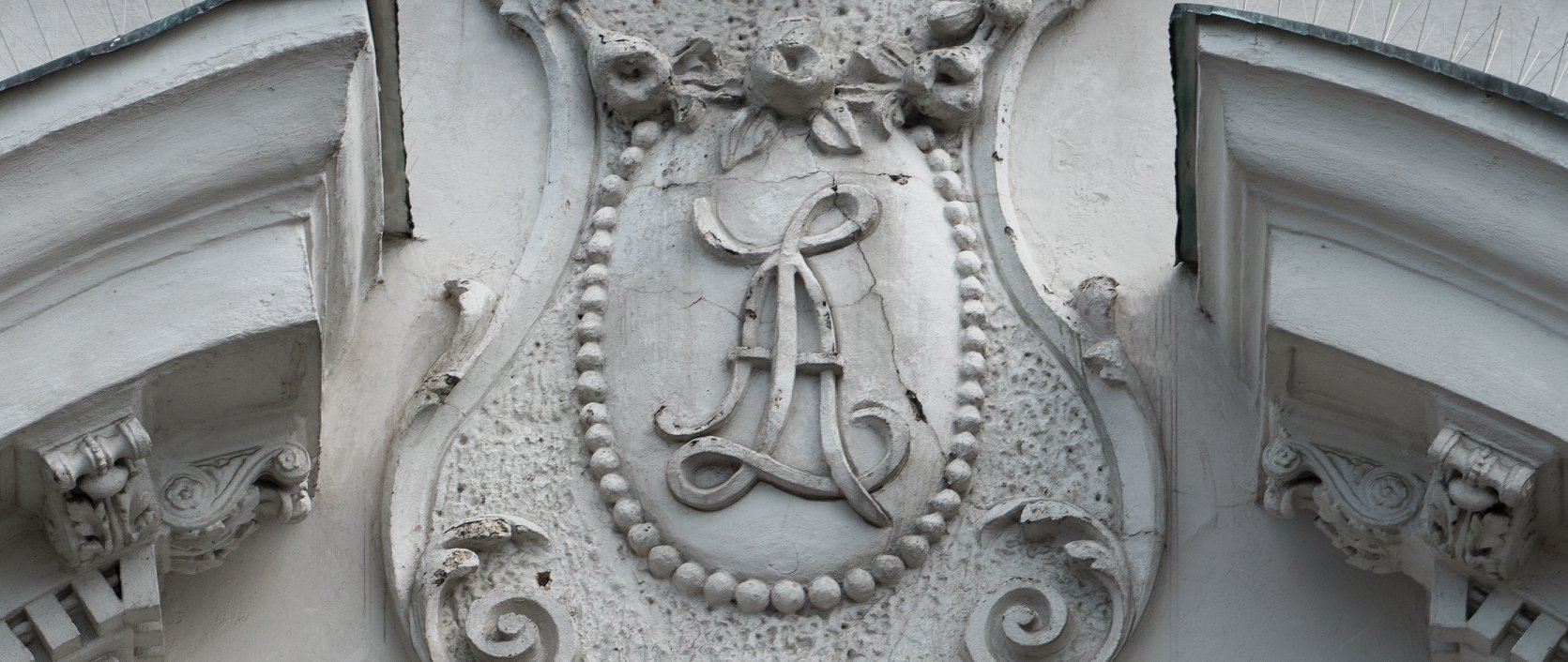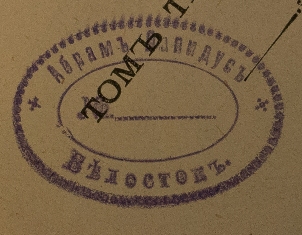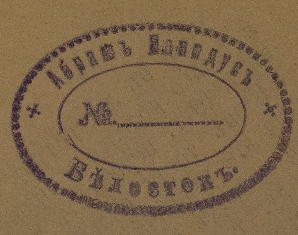Miejsca

Tenementwas built between 1900 and 1910 by Abram Lapidus. The possession atthe at that time Mikołajweska st was not the first real estate thatLapidus has acquired in Białystok. In 1896 he has bought a plot ofland from Elijah Łuński and Isaac Arkin on Pocztowa st with a brickhouse. After the 1919 it was at 25 Jurowiecka st. In the back therewere factory buildings, where various private textile factories wereoperating. Lapidus did not live permanently in Białystok but when hewas in town he stopped by at his house at the pocztowa st. Allsources point to this address. Which reveals that the house atMikołajewska st was built as a profitable investment in the centerof Białystok. Huge profit has been made from renting apartments,office and commercial premises, which were present in the whole area.Similarly, other local owners, such as Metz and Shulc, who built thetenement house near 22 Sienkiewicz st, had done so.
Overthe next few decades, hundreds of people and tens of companies havebeen in the house. In 1913 Epsztajn’s printing and engraving house“Progress” operated here, one of the rooms was occupied by thebanker Hersz Rappoport and tailor shops: Cejtlin and Kleinhorn’sfor women and Zinger’s for men. A Kejdanowicz has also sold watchesand silver. Next year, the sources record Szmul Medownik’shaberdasher’s store. Before 1915, entrepreneurs, lawyers, officialsand teachers lived here. The headquarters of a branch of the Societyfor the Propagation of Education among Jews was located here. So, the“high life” of Białystok of Russian times.
Untilthe '30s of the 20th century the tenement house belonged to AbramLapidus, who was still living in Grodno. He died in 1934, and thisyear the District Court started the inheritance proceedings. Therights to the tenement house were inherited by Benno Lapidus. In 1937he set up a company “Irask” trading cordage products, located at7 Różańska st. He owned it until World War II.
Theprominence and prestige of the Lapidus tenement house has beenmaintained throughout the interwar period and to this day. A briefreview of the 1932 address book of Białystok visualizes themultiplicity of people living in and the number of companies existingat 14 Sienkiewicz st. Doctors John Walewski and BettyMielnik-Wygodzka, Samuel Poloński, the vice-chairman of the city’sVoluntary Fire Guard, referendary Stanisław Ornstejn, dentists Saraand Aron Bernblum, some major businessmen. On the ground floor fromthe front and in the outbuilding were the cafeteria with theMacedonian Najdo Stoyanovich’s boza, Laundry “Atlas”, soda andcandy of Mordko Lewin, English bar of Saul Zaks, cloth shop, bottlingof vinegar essence, Romuald Tylicki’s renowned “Bank House”,insurance companies, agencies and resale shops and even a basqueberet manufactory. On 1st September of 1936 on 14 Sienkiewicz st, thePrivate Music Institute, run by Helena Frankiewicz, was inaugurated,where her sisters Zofia and Jadwiga worked.
Thebuilding survived war, mainly thanks to Jan, the father of theFrankiewicz sisters. After the war, it became the property of thestate. In spite of the efforts to recover the property rights toJózef Goldberg, brother-in-law of Bennon Lapidus, the Grodzki Court(apparently located in the tenement house at 14 Sienkiewicza st)decided to leave it to the state. In 1950 the Institute of Music,which was still acive until 1973, was also nationalized. After therenovation, the building was dedicated to the Warsaw TheaterAcademy's Faculty of Puppetry Art. This continues till this day.
credit Wiesław Wróbel https://poranny.pl/ul-sienkiewicza-14-kamienica-goscila-rozne-firmy/ar/4930415?fbclid=IwAR2OgLbB2Iu7yN6QpS1YaqOogd2MXO1qAhCkIJmuJrlG9rT09yIVuqVkP8Y










 uzupełnij jewishbialystok@gmail.com
uzupełnij jewishbialystok@gmail.com 



